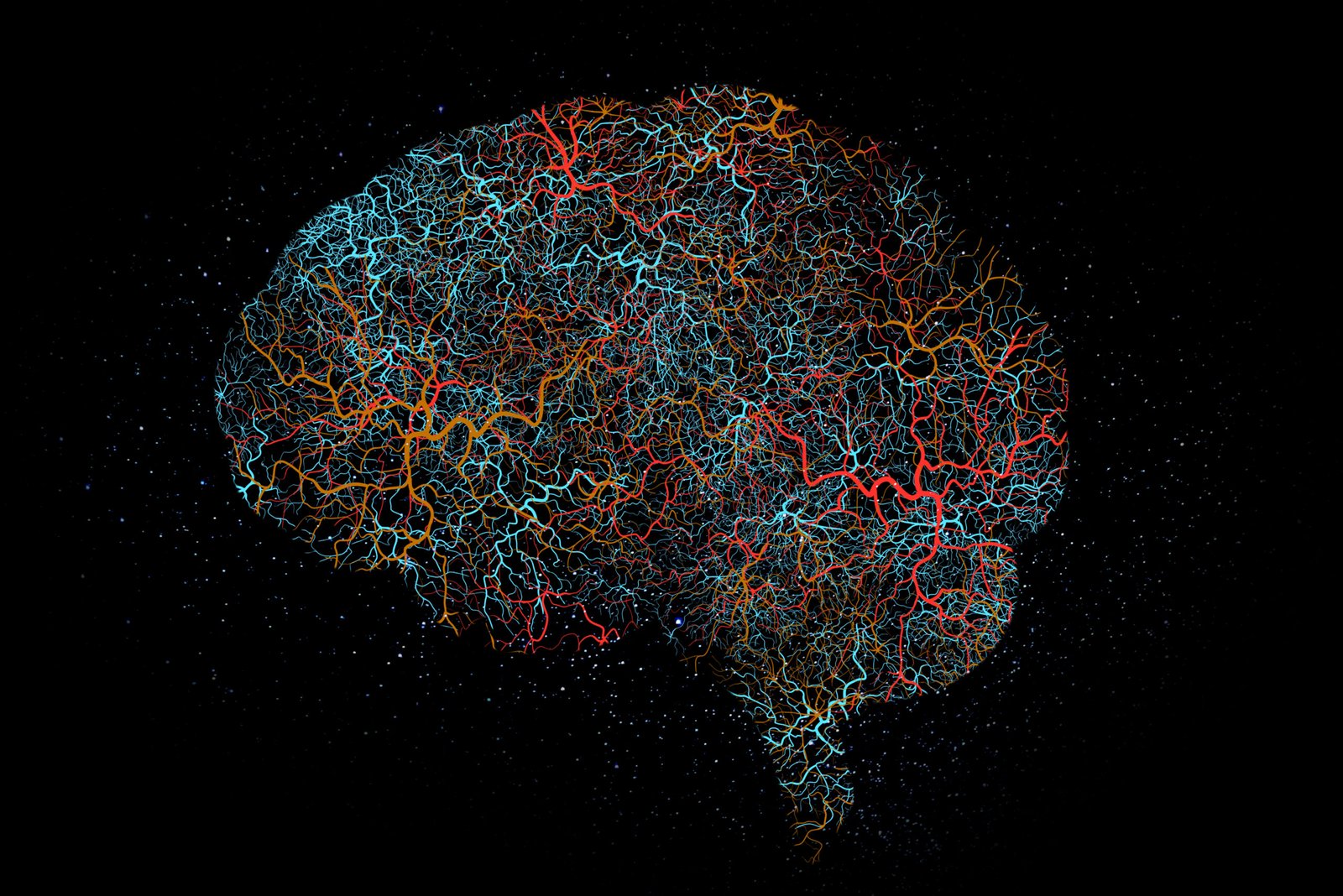
Brain graphic, neon neuro pattern and digital illustration with science hologram and mind connections. Black background and neuroscience pathway of intelligence, circuit system and cerebral lines
The Science Behind Compulsive Behaviors: Understanding Your Brain’s Survival Mechanism
You’re not broken. You’re overwhelmed. And there’s a reason for that. Your brain’s survival mechanism drives compulsive behaviors, creating patterns that seem unbreakable. But here’s the truth: these patterns can change with compassion and understanding. Imagine transforming emotional pain into self-trust and self-worth. You can break free from the cycle. Explore how VK Circle’s compassionate approach can guide you to transform survival mechanisms into empowered choices. Your journey to emotional healing and clarity starts now. Learn more about addiction science and the human brain’s ancient wiring.
Understanding Compulsive Behaviors

Compulsive behaviors often stem from intricate mechanisms within our brains. Recognizing these patterns is the first step towards change. Understanding the role of emotional pain and the brain’s survival instincts can illuminate why these behaviors persist and how they can be altered.
Brain Survival Mechanism
The brain’s survival mechanism is a fundamental driver of compulsive behaviors. These actions are not mere habits; they are deeply rooted survival strategies. Our brains are wired to protect us from perceived threats, often responding by forming repetitive behaviors as a shield against emotional distress.
The brain’s ancient wiring can sometimes confuse emotional pain with physical danger. This misinterpretation leads to compulsive actions, as outlined in research from Stanford University.
Studies reveal that the part of the brain responsible for survival instincts can override logical thinking, propelling compulsive tendencies (NCBI).
Recognizing this mechanism allows us to reframe compulsive behaviors as survival attempts rather than failures. This perspective is crucial for fostering self-compassion and initiating change.
Emotional Pain and Its Role
Emotional pain often lies at the core of compulsive behaviors. It acts as a catalyst, driving individuals to seek relief through repetitive actions. Understanding this connection is vital for healing.
Emotional pain signals unmet needs or unresolved trauma. It can lead to a cycle of compulsive behavior as a form of self-soothing.
Research shows that emotional pain can trigger the brain’s reward pathways, reinforcing compulsive actions (Michigan Medicine).
By addressing emotional pain, individuals can begin to break free from compulsive cycles. This process involves identifying the underlying emotions and finding healthier ways to cope, which promotes lasting change.
Breaking the Cycle of Compulsions

Understanding the science behind compulsive behaviors is essential, but taking action is what truly breaks the cycle. This section explores strategies for overcoming these patterns and rebuilding self-worth.
Heal Your Life® Approach
The Heal Your Life® method provides practical tools for addressing compulsive behaviors. This approach emphasizes self-awareness and empowerment, guiding individuals toward emotional healing.
Acknowledge the Behavior: Recognize and accept the compulsive actions without judgment.
Identify Triggers: Determine the situations or emotions prompting these behaviors.
Develop Coping Strategies: Use positive affirmations and mindfulness to manage triggers effectively.
By implementing these steps, individuals can shift from survival to thriving. This approach fosters a compassionate understanding of one’s journey and promotes self-love as a foundation for change.
Rebuilding Self-Worth
Compulsive behaviors often erode self-worth, creating a cycle of negative self-perception. Rebuilding self-worth is a critical component of recovery.
Start by challenging negative beliefs. Replace self-criticism with affirmations of self-acceptance.
Set realistic goals that build confidence and reinforce a sense of achievement.
As individuals rebuild self-worth, they gain the strength to make healthier choices. This empowers them to move beyond compulsions and embrace a life of fulfillment and self-respect.
Empowering Change with Non-Clinical Coaching

Non-clinical coaching offers a supportive environment for individuals seeking change. This section explores strategies for emotional healing and highlights VK Circle’s compassionate guidance.
Emotional Healing Strategies
Emotional healing involves addressing the root causes of compulsive behaviors. Effective strategies can transform emotional pain into self-empowerment.
Mindfulness Practices: Encourage self-awareness and present-moment focus.
Emotional Release: Use expressive activities like journaling or art to process emotions.
These strategies promote an understanding of emotional patterns and foster resilience. They provide tools to navigate challenges and support emotional growth.
VK Circle’s Compassionate Guidance
VK Circle offers a unique approach to breaking free from compulsive behaviors. Our non-clinical coaching creates a safe, judgment-free space for personal growth.
Empathetic Support: We provide guidance without labels or diagnosis, promoting self-discovery.
Tools for Change: Our 90-Day Emotional Freedom Program equips individuals with practical tools to reset self-worth and behavior patterns.
With VK Circle’s guidance, individuals can reclaim their power and embark on a transformative journey. Our compassionate coaching empowers clients to rewrite their stories with courage and clarity. 🌟



